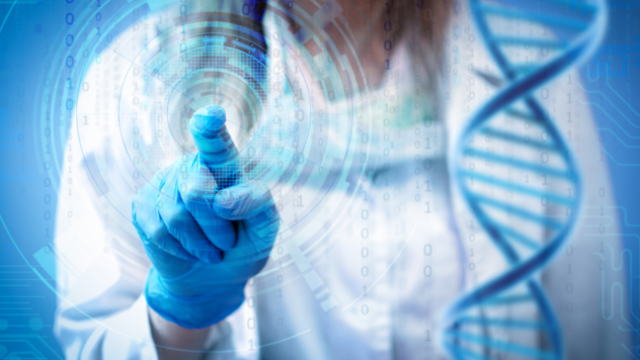Today’s laboratories look very different to ten years ago, but what about ten years from now?
copyright by www.technologynetworks.com
 The way in which scientist’s approach research has been drastically influenced by the advancement of technologies. The integration of robotics and automation has revolutionized procedures, transforming tedious manual processes to automated liquid-handling systems.
The way in which scientist’s approach research has been drastically influenced by the advancement of technologies. The integration of robotics and automation has revolutionized procedures, transforming tedious manual processes to automated liquid-handling systems.
The introduction of microfluidics and lab-on-a-chip technologies, adoption of paperless workflows, and the ever-increasing interest in cloud computing, machine learning, and artificial intelligence (AI) are just a few factors instrumental in the transformation of the laboratory. More specifically, influencing procedure efficiency, reproducibility, data collection, analysis and sharing, and much more.
Microfluidics and lab-on-a-chip technologies
Microfluidics enables the manipulation and analysis of extremely small fluid volumes within a multichannel system (10 –9 to 10 –18 litre). The capacity to downsize large-scale biology coupled with the capability of housing multiple experiments on a single chip, which is small enough to fit in the palm of your hand, is an attractive concept.
The ability of microfluidics to miniaturize multiple laboratory operations, is reflected in its use across a multitude of scientific fields, including the areas of genomics, materials science, molecular biology, and organic chemistry. There are several advantages to microfluidic technologies. Firstly, very little sample is required, meaning precious or scarce samples can be conserved. The volume of reagents is also significantly reduced compared to traditional large-scale analyses, translating to an overall cost saving. Another benefit is that the miniaturized system can still achieve high-resolution analysis, whilst maintaining sensitivity. The nature of the channels (high surface-to-volume ratio) means that reagents rapidly diffuse into the reaction chamber, reducing the time it takes to complete a reaction, generating results faster. Finally, lab-on-chip systems can be automated and standardized meaning there is little need for human intervention, eliminating the risk of ‘human error’.1,2 This is particularly beneficial considering the continued evolution of robotics and automation within laboratories.
Automation and robotics
To merely say ‘technology has changed the way we conduct research’ is an understatement— it has truly transformed it.
Robotics has enabled significant restructuring of the workplace. Many areas traditionally reserved for ‘wet lab’ benchwork have been reallocated to liquid handling robots that are capable of processing hundreds, if not thousands, of samples, through the use of pre-programmed and customizable procedures, requiring limited supervision. Such automation allows researchers to invest more time on data analysis. An important point to note is that the implementation of robotic instruments does require ‘fit for purpose’ workflows and data storage solutions to ensure one’s ability to sort, organize and access the data. This challenge has been a major focus for cloud-based data storage, AI and machine learning developers over that last few years. […]
read more – copyright by www.technologynetworks.com


Today’s laboratories look very different to ten years ago, but what about ten years from now?
copyright by www.technologynetworks.com
The introduction of microfluidics and lab-on-a-chip technologies, adoption of paperless workflows, and the ever-increasing interest in cloud computing, machine learning, and artificial intelligence (AI) are just a few factors instrumental in the transformation of the laboratory. More specifically, influencing procedure efficiency, reproducibility, data collection, analysis and sharing, and much more.
Microfluidics and lab-on-a-chip technologies
Microfluidics enables the manipulation and analysis of extremely small fluid volumes within a multichannel system (10 –9 to 10 –18 litre). The capacity to downsize large-scale biology coupled with the capability of housing multiple experiments on a single chip, which is small enough to fit in the palm of your hand, is an attractive concept.
The ability of microfluidics to miniaturize multiple laboratory operations, is reflected in its use across a multitude of scientific fields, including the areas of genomics, materials science, molecular biology, and organic chemistry. There are several advantages to microfluidic technologies. Firstly, very little sample is required, meaning precious or scarce samples can be conserved. The volume of reagents is also significantly reduced compared to traditional large-scale analyses, translating to an overall cost saving. Another benefit is that the miniaturized system can still achieve high-resolution analysis, whilst maintaining sensitivity. The nature of the channels (high surface-to-volume ratio) means that reagents rapidly diffuse into the reaction chamber, reducing the time it takes to complete a reaction, generating results faster. Finally, lab-on-chip systems can be automated and standardized meaning there is little need for human intervention, eliminating the risk of ‘human error’.1,2 This is particularly beneficial considering the continued evolution of robotics and automation within laboratories.
Automation and robotics
To merely say ‘technology has changed the way we conduct research’ is an understatement— it has truly transformed it.
Robotics has enabled significant restructuring of the workplace. Many areas traditionally reserved for ‘wet lab’ benchwork have been reallocated to liquid handling robots that are capable of processing hundreds, if not thousands, of samples, through the use of pre-programmed and customizable procedures, requiring limited supervision. Such automation allows researchers to invest more time on data analysis. An important point to note is that the implementation of robotic instruments does require ‘fit for purpose’ workflows and data storage solutions to ensure one’s ability to sort, organize and access the data. This challenge has been a major focus for cloud-based data storage, AI and machine learning developers over that last few years. […]
read more – copyright by www.technologynetworks.com
Share this: